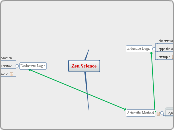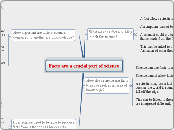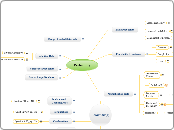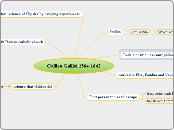Zen Science
Deductive Logic
if, from reading the hierarchy of facts about the machine, the mechanic knows the horn of the cycle is powered exclusively by electricity from the battery, then he can logically infer that if the battery is dead the horn will not work.
predict obsevation
Opposite of inductive
Scientific Method
solutions are achieved by using both deductive and inductive methods - also known as the scientific method
Logical Statements:
(1) statement of the problem, (2) hypotheses as to the cause of the problem, (3) experiments designed to test each hypothesis, (4) predicted results of the experiments, (5) observed results of the experiments,(6) conclusions from the results of the experiments.Conclusion
not stating more that what the experiment has proved
in the conclusion skill comes in stating no more than the experiment has proved. It hasn't proved that when he fixes the electrical system the motorcycle will start. There may be other things wrong. But he does know that the motorcycle isn't going to run until the electrical system is working, and he sets up the next formal question : "Solve problem: What is wrong with the electrical system?"
Experiment
To test properly the mechanic removes the plug and lays it against the engine so that the base around the plug is electrically grounded, kicks the starter lever and watches the spark plug gap for a blue spark. If there isn't any he can
conclude one of two things: (a) there is an electrical failure, or (b) his experiment is sloppy. If he is experienced he will try it a few more times, checking connections, trying every way he can think of to get that plug to fire. Then if he can't get it to fire, he finally concludes that (a) is correct, there's an electrical failure, and the experiment is over. He has proved that his hypothesis is correct.
Hypothesis
after stating the problem you make a hypothesis, which is basically trying to identify the unknown causes of the problemYou think of as many hypotheses as you can, then you design experiments to test them to see which are true and which are false. Example
"Hypothesis number one: the trouble is in the
electrical system"
Statement of Problem
dont make a statement unless you are positively sure of what you are saying.
Inductive Logic
example
if the cycle goes over a bump and the engine misfires, and then goes over another bump and the engine misfires, and then goes over another bump and the engine misfires, and then goes over a long, smooth stretch of road and there is no misfiring, and then goes over a fourth bump and the engine misfires, one can logically conclude that the misfiring is caused by the bumps
opposite of deductive
observation and conclusion
with observations of the machine and arrive at general conclusions
reasoning from particular experiences to general truths.









